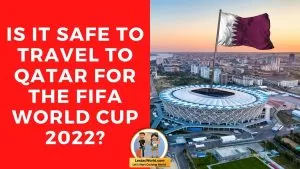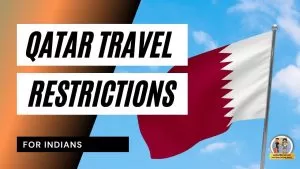
A South African Nationwide Defence Power (SANDF) soldier gestures in the route of operation “Shanela” in the Soul Metropolis informal settlement at Kagiso on December 14, 2024. Safety forces raided a casual settlement west of Johannesburg, inspiring scores of people in a crackdown on unlawful mining. (Portray by WIKUS DE WET/AFP by technique of Getty Photos)
The South African Nationwide Defence Power marks 30 years this year, having been established on April 27, 1994. It is as damaged as the country’s constitutional democracy and the implications of a negotiated political settlement that ended apartheid. The defence force consists of the navy, air force, navy, and militia, as well as carriers.
It is an amalgamation of the extinct apartheid-generation South African Defense Power, the militaries of the extinct, nominally just Bophuthatswana, Transkei, Ciskei, and Venda, and the extinct liberation armies of the African Nationwide Congress and the Pan Africanist Congress of Azania. It is presently ranked third in Africa, after Egypt and Algeria.
Where does the defence force bag itself after three decades? How does it measure up to its mandate of defending the country against exterior aggression, promoting security externally and internally, and supporting the inhabitants and government as wished?
The defence force has been anticipated to safeguard the country against exterior threats while concurrently responding to political calls for relief with peace and security operations in diversified African international locations. It has also been called on to enhance the South African Police Service in policing a crime-ridden society.
A mismatch has developed between what is anticipated of the militia and its funds and capabilities. Its funds declined to about 1% of unsuitable domestic product (GDP) in the previous decade. Here is some distance too low when compared to world moderate militia spending of 2.2% of GDP.
As a researcher who has studied the defence force as an international policy instrument for nearly three decades, I am no longer stunned; it is some distance commonly described as “institutionally overstretched.”. It has been in decline for some time, especially since 2000, as its budgetary allocation from the Treasury has shriveled.
Realizing its predominant characteristic
The government’s insurance policies after 1994 dedicated the defence force essentially to safeguarding the country’s sovereignty and territorial integrity. The procuring of the latest militia tools was once in accordance with the South African Defence Review of 1998. The review elaborated on the 1996 White Paper for Defense on such issues as posture, doctrine, force invent, force stages, logistical increase, armaments, tools, human property, and funding.
The White Paper stipulated that the force inventing it needs to be a high-technology core force, sized for peacetime, but expandable to meet any emerging threat. To this pause, cupboard decided in November 1998 to have sleek militia tools. This became the notorious arms deal, mired in corruption. The tools integrated nine Gripen fighter planes, 12 Hawk planes, 30 light utility helicopters, four patrol corvettes, and three submarines.
Critics felt that the corvettes, submarines, and Griffin jet opponents would be regarded as offensive weapons. That wouldn’t align with South Africa’s international policy, particularly touching on participation in world peace missions with an emphasis on cooperative defence and regional peacekeeping.
It was once sooner or later decided that the defence force needed to be designed essentially to guard the country from exterior enemies. It could truly, moreover, promote peace and security in Africa as secondary functions.
Things are no longer comparatively panned out along that stretch. Since 1998, the defence force has featured prominently as an instrument in South Africa’s international policy. Its so-called secondary functions maintain change into the dear characteristic. But it has bought no further armour or personnel for this further characteristic.
The post-1994 government sought to rid the country of its apartheid-generation image of being a pariah and a destabilising part of its neighbourhood. As a substitute, it was once acknowledged for the promotion of human rights, peace, and pattern in Africa.
The force grew to become the fifth-greatest troop-contributing nation to the UN’s peacekeeping operation in the eastern Democratic Republic of the Congo (DRC). It also performs a pivotal role in the Southern African Style Neighborhood Mission in war-ridden northern Mozambique.
It has been in the DRC since 1999. This UN mission will now be terminated after more than 24 years and replaced by troops from the Southern African Style Neighborhood, led by the South African Nationwide Defense Power.
But troopers in self-discipline haven’t incessantly bought loyal logistical increase, especially in Mozambique. And downhearted coordination with the Department of International Knowledge and Cooperation has most frequently left the country embarrassed.
Among diversified peacekeeping missions, since 1994, the defence force has also been deployed to:
- Lesotho, 1998: restoring democracy and political balance, supported by the Botswana militia
- Burundi, 2003: peacekeeping alongside Mozambique and Ethiopia as part of the African Union Mission in Burundi
- Sudan, 2005: as part of the United Nations-African Union Mission in Darfur.
Constraints
Budgetary constraints continue to pose a rising threat. Between 1995 and 1998, the defence funds decreased by 11.1%.
In 2015, the defence force was once 24% underfunded when it involved its size and form. Defense spending in 2022/23 was 8.4% lower than in 2021 and 21% lower than in 2013.
The country’s ill economic system and low development build excessive tension on government finances.
Thanks to budgetary constraints, the serviceability and functionality of high-tech tools, especially the Gripens, frigates, and submarines, couldn’t be sustained.
The hollowing out of the armed forces was laid bare in 2023. The defence minister, Thandi Modise, disclosed that a staggering 85% of the air force’s planes immediately became out of action, leaving the country susceptible to exterior security threats.
By 2013, two of the 26 Gripen fighter planes and three of the 24 Hawk planes were readily accessible for carriers.
The funding disaster is so excessive that some defence analysts are now proposing to minimize the air force to a mere air waft of the defence force, which could maintain fewer than 75 planes.
The navy has no higher self-discipline. All frigates, the navy’s predominant wrestling and patrol vessels, are in urgent need of repair. The three submarines that were part of the 1999 arms deal also came with a small selection of spare parts, compared to the frigates. Generally, none of the many submarines are serviceable.
Concerns at dwelling
Border security and increased police operations are now two of the most important force’s predominant actions. These consist of inner or domestic operations similar to helping the police combat gang warfare, preventing unlawful mining syndicates, preventing the torching of business vehicles, guarding vitality crops, and combating cash-in-transit heists. These tasks can now even be regarded as among the many militia’s predominant functions.
Two components force the increased characteristic in domestic security. One is the declining skill of the police. Secondly, politicians see the militia as an instrument for policing roles and diversified functions, all contributing to the degeneration of South Africa’s defence skills.


